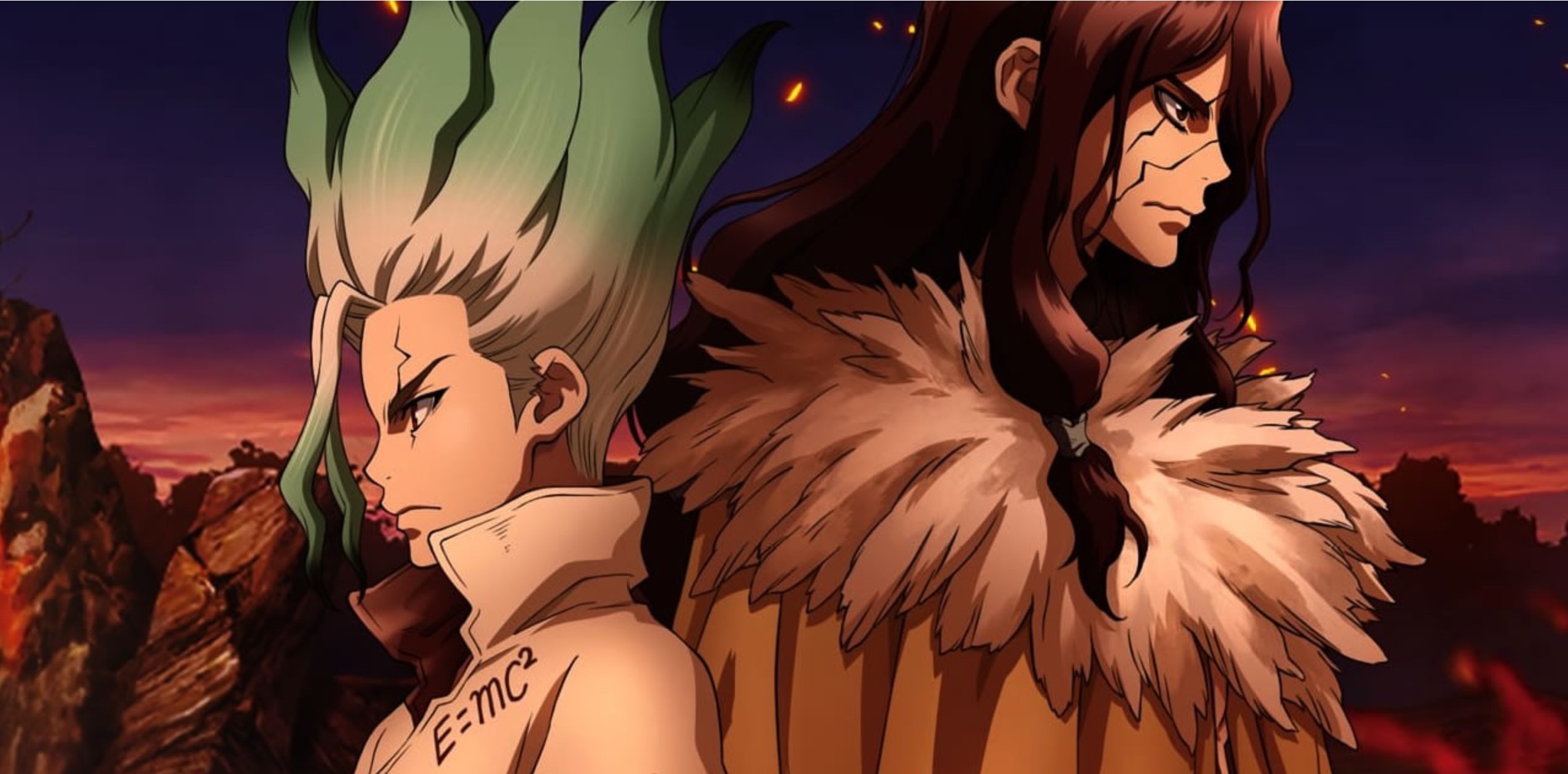Table of Contents Show
Dr. Stone is a popular shonen manga series written by Riichiro Inagaki and illustrated by Boichi. Its anime adaptation, produced by TMS Entertainment, is currently airing its second season. The series has garnered a lot of attention as an unconventional and innovative entry in the shonen genre, and that groundbreaking vision starts with the series’ premise. In the year 2019, a mysterious green light washes over the entire world and instantly petrifies all humans, encasing them in solid stone.
Three thousand seven hundred and nineteen years later, a young man named Senku Ishigami wakes up in a post-apocalyptic Japan, the vestiges of modern civilization having long since crumbled and been replaced by an overgrown wilderness littered with petrified humans. Alone in a world that’s been reverted to the Stone Age, Senku must find a way to survive and eventually revive his fellow humans and remake civilization from the ground up. So, it’s a good thing that Senku just happens to be a scientific genius.
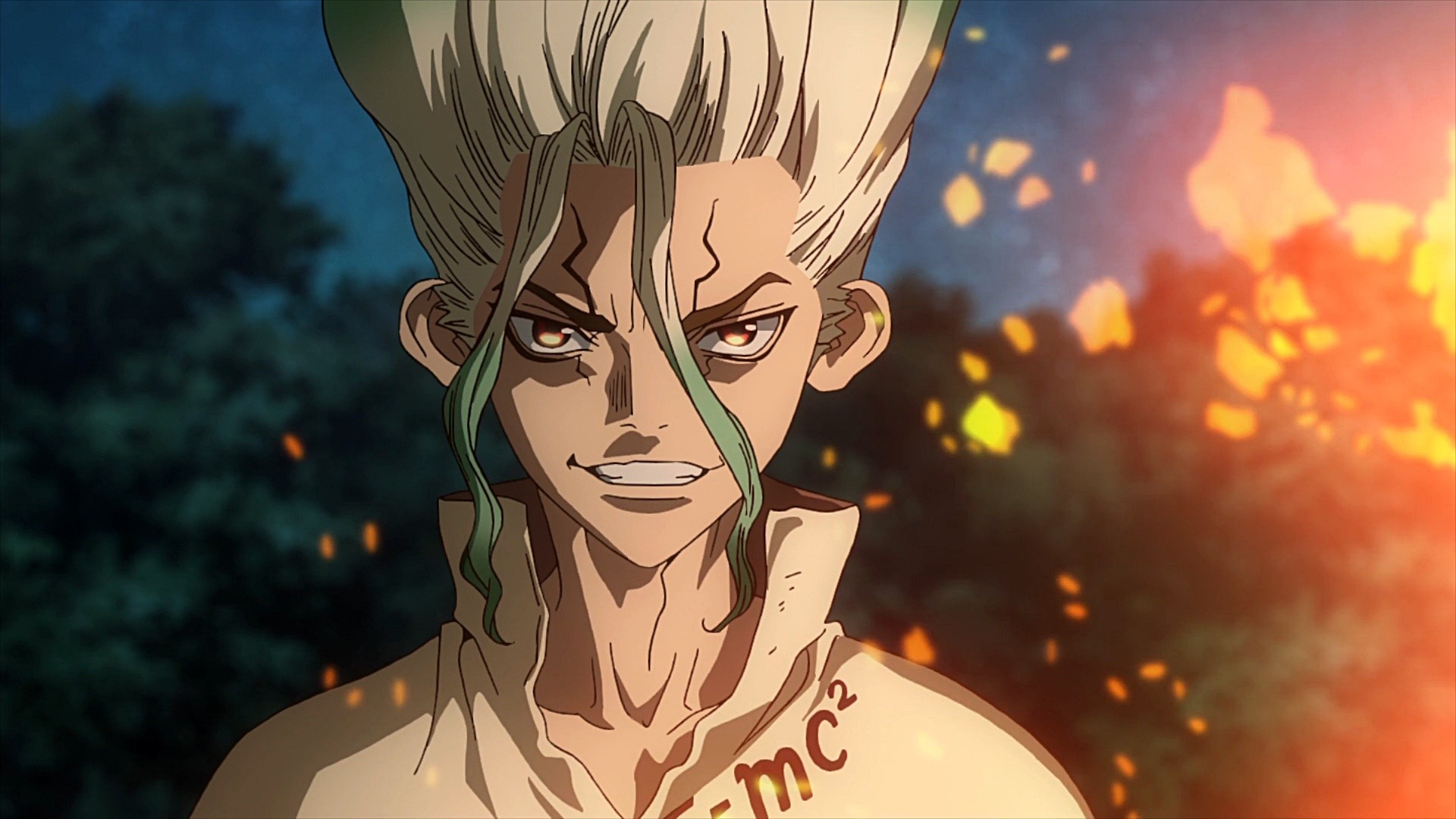
Indeed, this cackling, green-haired maniac with “E = mc2” scrawled on his shirt possesses some pretty amazing scientific skills. But his prowess is more than just a character quirk, and it’s also more than the engine that powers the plot. Senku’s incredible abilities, along with those of many other characters in Dr. Stone, make up a fascinating thematic through-line and reveal the series’ underlying worldview, where exceptional people rise to the top of society and drive the progress of civilization. However, whether that worldview ends up being pernicious or inspiring depends on the small details of the show’s presentation and the progress of the story as a whole.
Stone World 101
Far from a typical shonen action-adventure romp, Dr. Stone focuses its early episodes on Senku’s incredible feats of science-fueled wilderness survival. The series doesn’t shy away from the nitty-gritty details and even features educational asides that let the audience in on exactly how Senku achieves inventions like stone tools, soap, and even gunpowder. Luckily, the show is careful to include disclaimers about whether these inventions are safe to recreate at home.
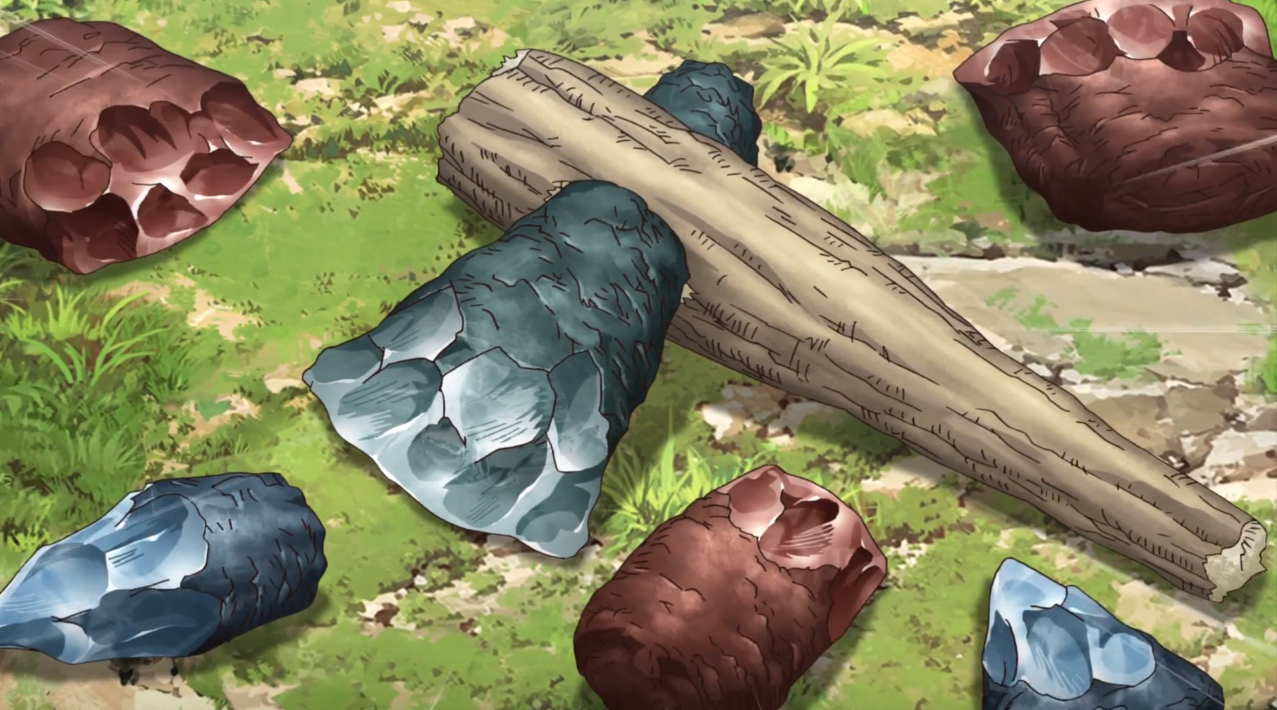
From this Man vs. Wild meets Bill Nye the Science Guy starting point, the series takes many twists and turns that come to inform the plot later on. Senku discovers a way to revive petrified humans with nitric acid, which can only be found in one cave in the immediate area. After bringing back his best friend Taiju, he decides that he wants to eventually revive all the humans on Earth, creating a new technologically advanced civilization.
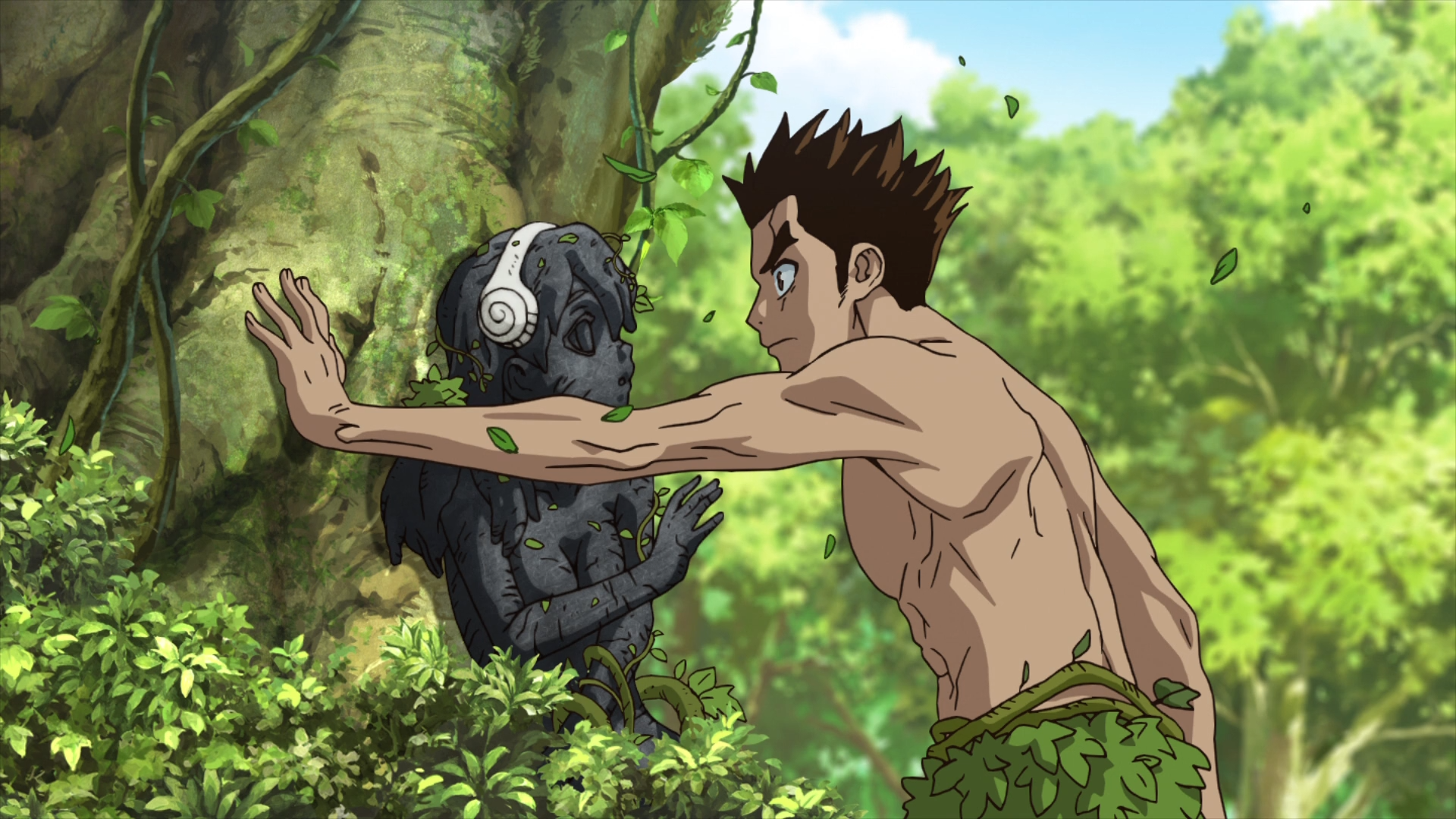
However, one of the first people Senku and Taiju end up reviving is Tsukasa Shishio, an MMA fighter known as the “strongest high school primate.” Tsukasa is disillusioned with the modern world and wants to take advantage of the mass petrification to start fresh. His goal is to deliberately suppress scientific progress, which he views as a corrupting influence, and to only revive children, who he views as innocent, abandoning the “corrupt” adults in their petrified state.
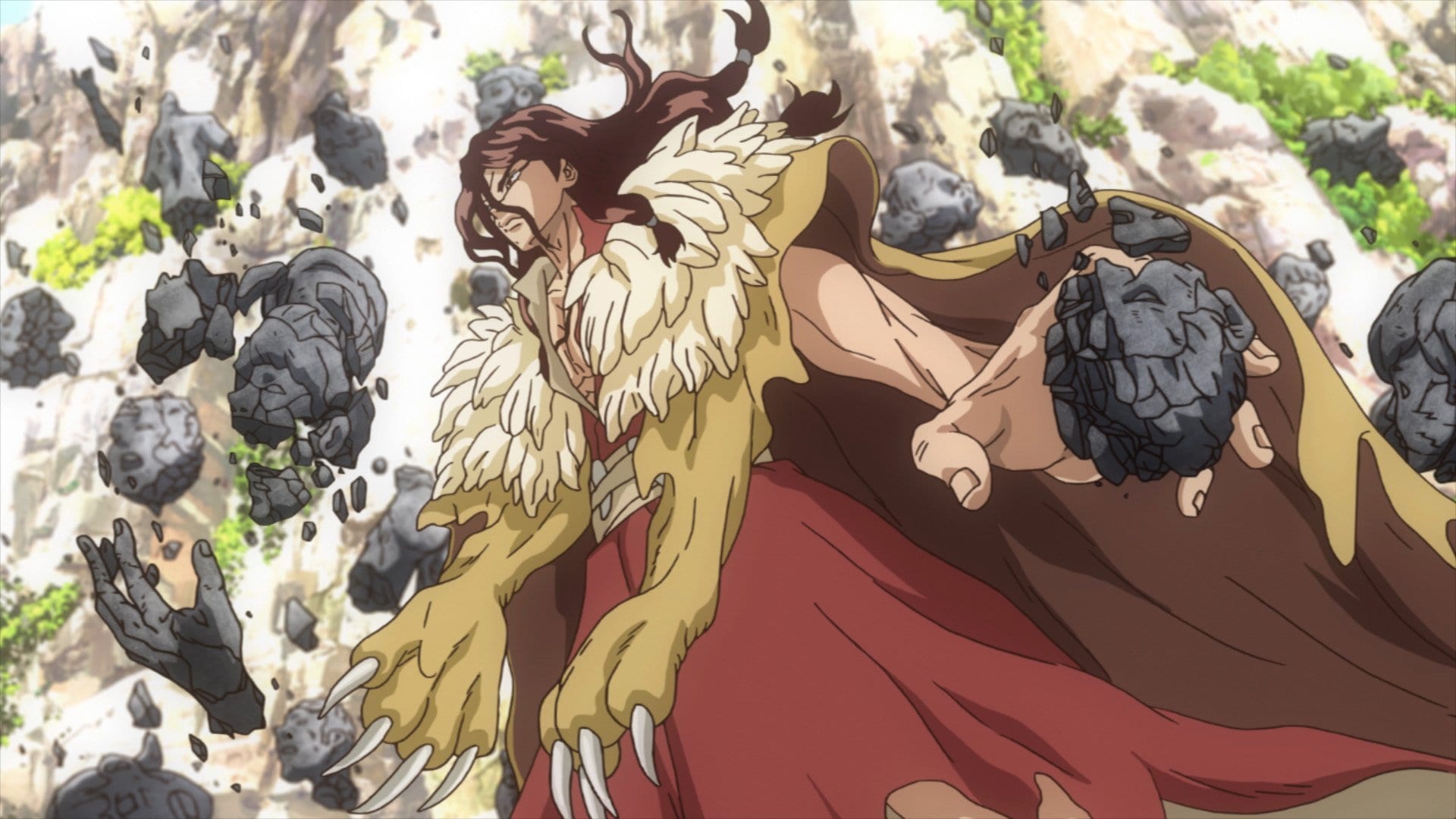
Naturally, Senku and Tsukasa’s disagreement comes to a head, and Senku flees. Soon, he comes across a village of people who have somehow been living, unpetrified, for generations, and convinces them to embrace scientific progress. Meanwhile, Tsukasa, who now controls the “cave of miracles” that supplies the revival fluid, is un-petrifying people to grow his own strength-worshipping empire with the goal of killing Senku and eliminating the potential for technological advancement.
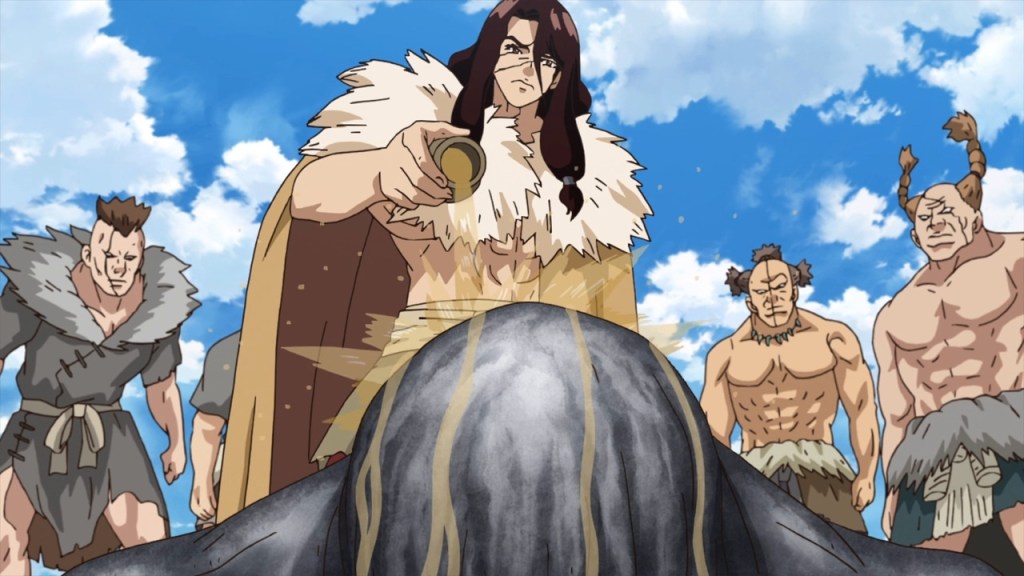
With the very future of humanity hanging on the outcome of these “Stone Wars,” the ideological stakes couldn’t be higher. And in the conflict, each side’s most important asset might be their exceptionally talented, charismatic leaders. Their presence reveals Dr. Stone’s underlying ideology about how to build a society, both in a post-apocalyptic jungle and in real life.
These Guys Rock!
So, just how amazing is Senku? Well, even though he was only fifteen when the world was petrified, his exploits in the stone world reveal that he has effectively all modern scientific knowledge stored in his mind. If he needs to solve a problem involving chemistry, engineering, biology, or any other scientific field, there’s no fact, formula, or figure Senku can’t immediately call upon and utilize. His inventions alone attest to his incredible scientific prowess: Senku eventually creates antibiotics, freeze-dried ramen, light bulbs, portable radios, and an armored tank using only the materials available in his natural surroundings.
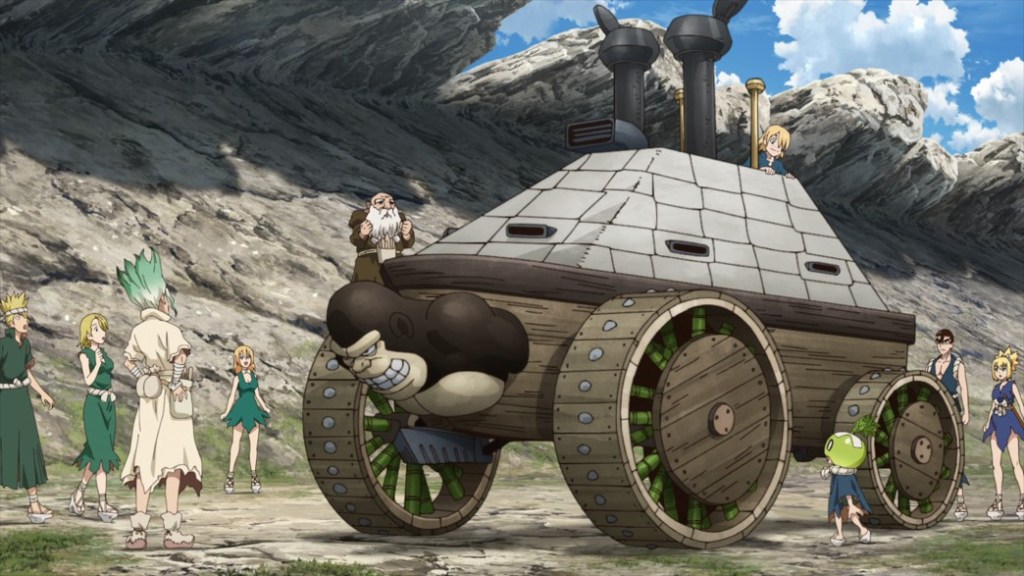
But perhaps Senku’s most exaggerated achievement occurred while he was still petrified. Petrified humans can remain conscious and think even though they can’t see or sense the world around them. As soon as he’s petrified, Senku decides that he wants to keep track of time, so he counts every second as it goes by for three thousand seven hundred and nineteen years until he’s revived. This is where Senku’s mental faculties cross from impressive to impossible, and it becomes clear that we’re dealing with someone who’s truly superhuman.
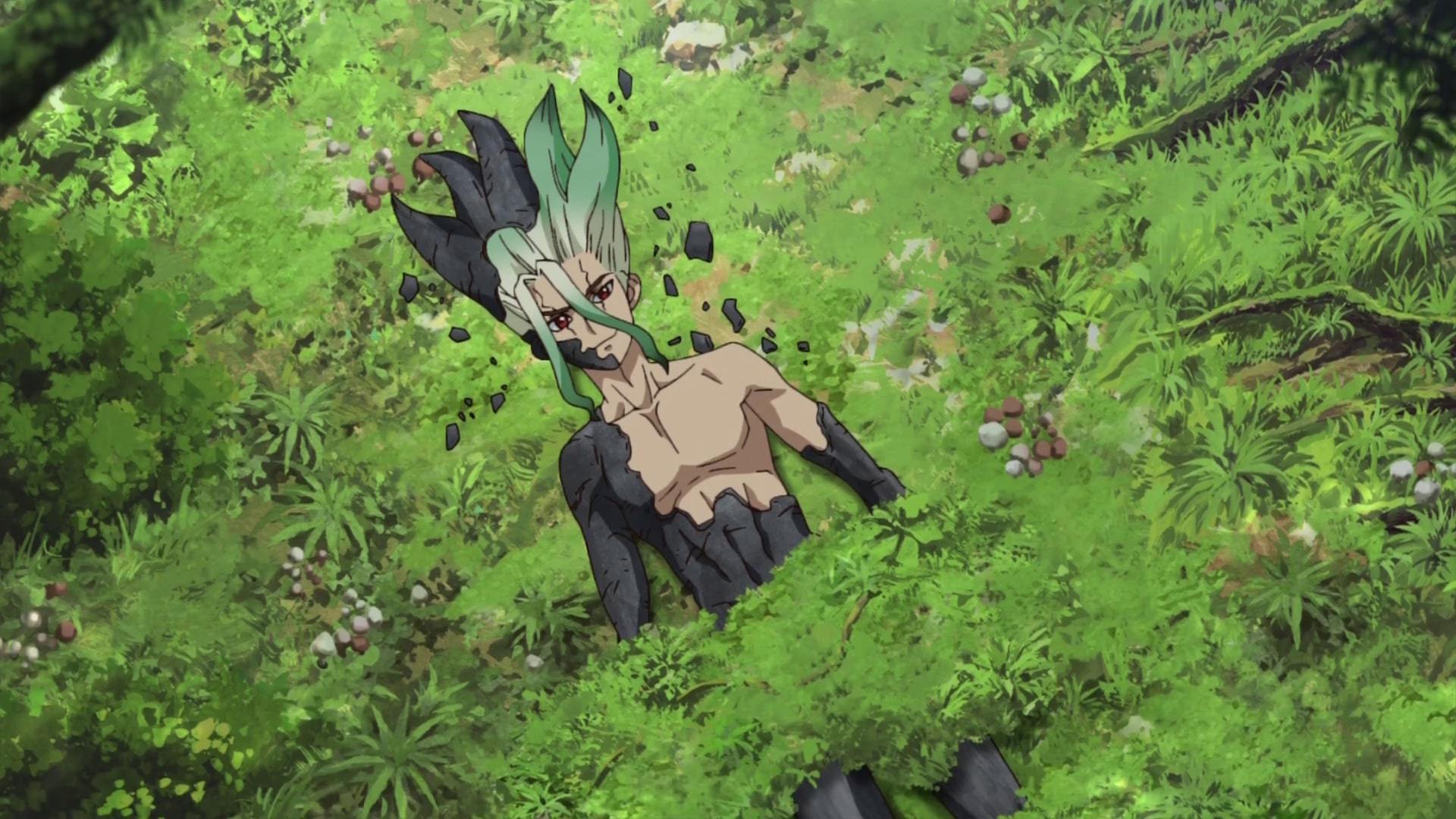
What about Tsukasa, the so-called “strongest primate?” Incredibly, his abilities become impossible and even faster than Senku’s. Taiju and Senku find his petrified body while running away from a pride of jungle-dwelling lions. Knowing about his strength from his fame as an MMA fighter, they pour the revival fluid on him. He immediately bursts out of his stone casing and kills a lion in one punch, which is a laughably unrealistic feat.
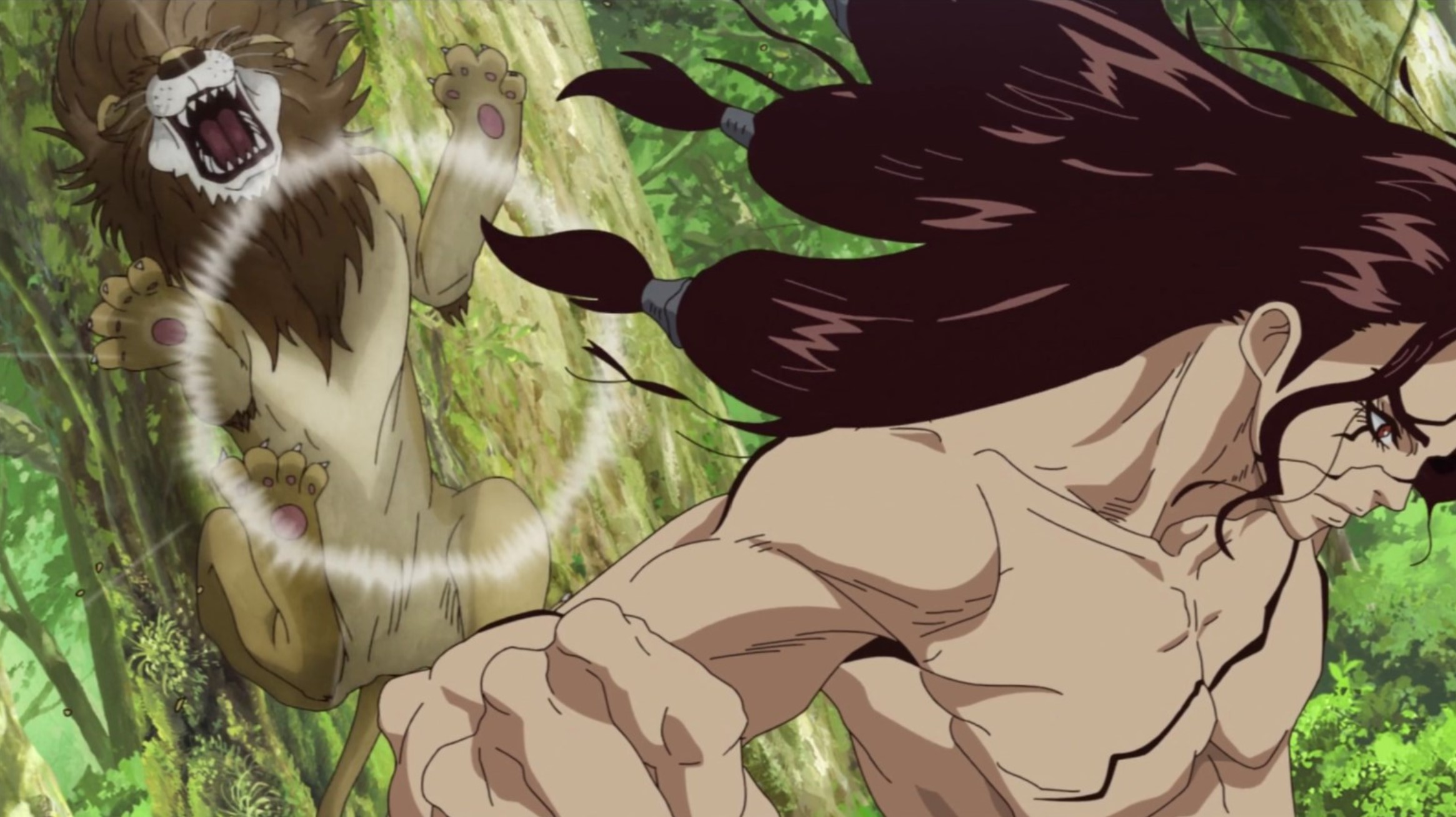
Later, he even uses a stone sword to cut down a foot-thick tree in one chop. It seems unlikely that anything could match the absurdity of Senku’s intellectual abilities, but Tsukasa’s muscles certainly come close, and his brawn makes a fitting foil for Senku’s brains. Dr. Stone has several other characters who possess remarkable abilities, most of whom come to the Stone World after being revived by Tsukasa for his army. Gen Asagiri was a stage magician and mentalist before the petrification event. He uses his mastery over psychology to manipulate people, predict their actions, and even imitate their voices to a fault. Those skills make him an invaluable asset when he eventually defects to Senku’s side.
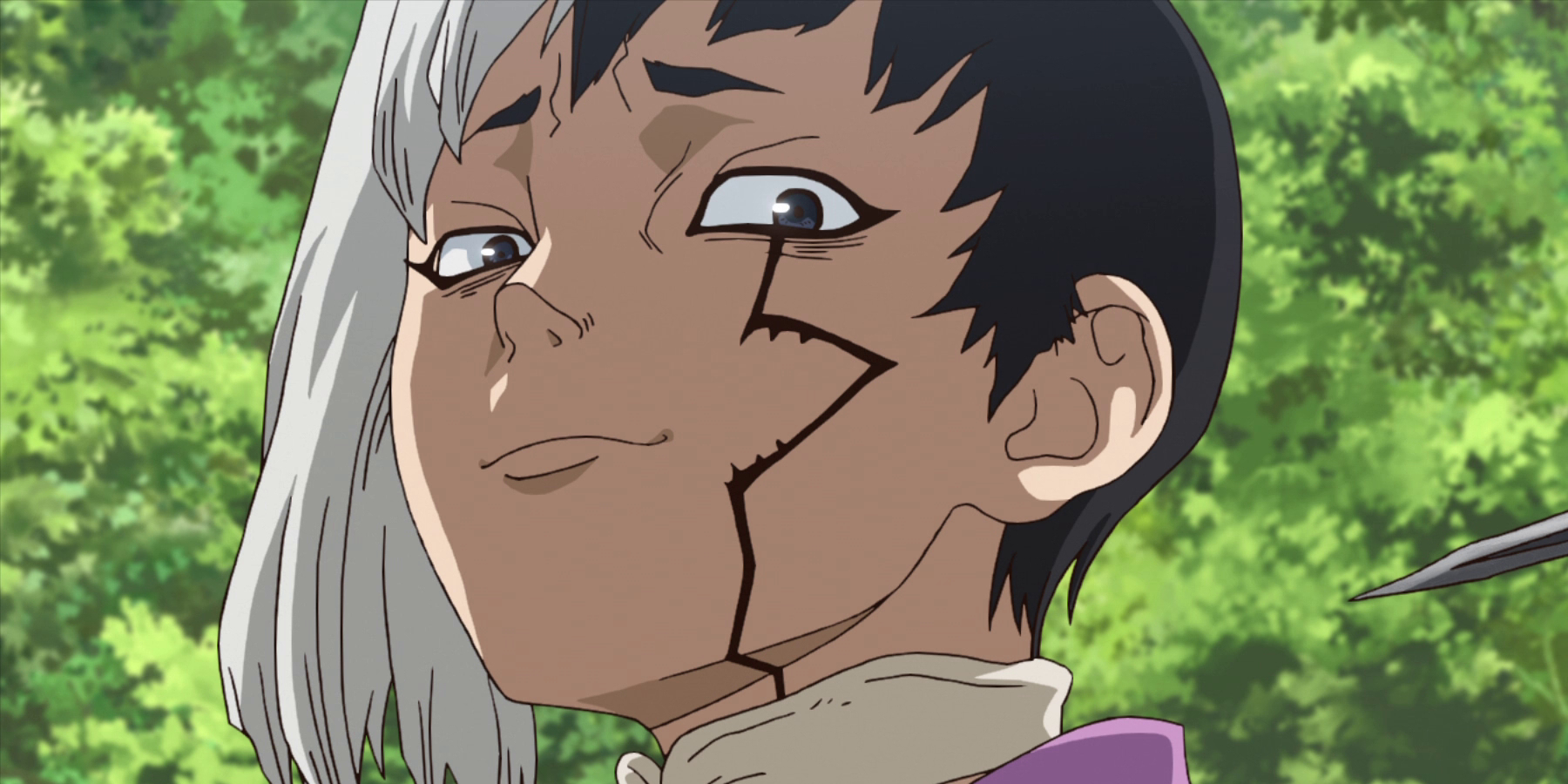
Homura Momiji, Tsukasa’s scout, was a gymnast and is able to use her techniques to outmaneuver even the most agile of Senku’s allies. And Ukyo Saionji is an archer with such sensitive hearing that he can pinpoint someone’s location with sound alone, gained after years of working as a sonar operator. With so much of the cast taken up by incredibly exceptional people, it’s clear that they don’t just feature in this story but that they’re an integral part of the show’s worldview. But what exactly does that worldview entail?
I Am A Rock
Viewers familiar with philosophical and literary history might find similarities between the exceptional people and incredible achievements of Dr. Stone and philosophical ideas such as individualism, which emphasizes the role and moral worth of individual people as opposed to groups or communities. More specifically, the show seems to align with Objectivism, which was created and developed by Russian-American author and philosopher Ayn Rand.
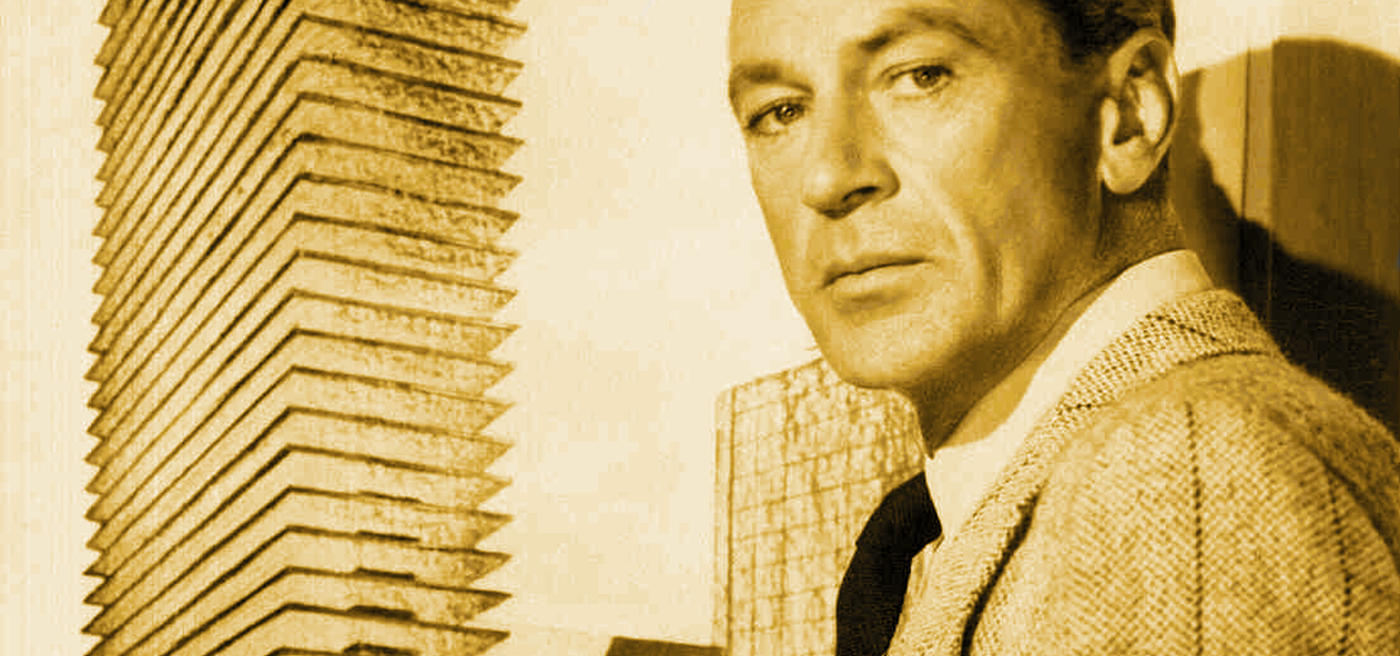
Objectivism is a complicated system that touches on many different areas of philosophy and politics. Still, one of its core ideas is rational egoism, or the notion that the morally correct course of action is pursuing one’s own happiness and achievement. Rand expressed her philosophy most famously in her fiction, which features idealized protagonists heroically pursuing their own interests and rising above the mediocre or foolishly altruistic people around them. In her novel The Fountainhead, architect Howard Roark has an exceptional and unique vision for modernist architecture. But he’s constantly hindered by the architectural establishment until he’s finally recognized for his greatness at the end of the novel. In his dramatic final speech, Roark says:
“Throughout the centuries there were men who took first steps, down new roads, armed with nothing but their own vision.”
Ayn Rand, The Fountainhead (( Rand, Ayn. Fountainhead. Bobbs-Merrill, 1943. ))
The potential of these exceptional people is one of the reasons Rand advocated for extreme individualism and egoism, as well as unrestrained laissez-faire capitalism. For a modern example of media that’s been said to reflect Rand’s ideas, look no further than Pixar’s The Incredibles, which applies the idea of exceptionality to superheroes and casts them as pariahs whose potential is suppressed by society at large.
Like those in The Fountainhead and The Incredibles, Dr. Stone’s exceptional people are blessed with unique vision and borderline supernatural capabilities. An Objectivist might say that the only difference is that Dr. Stone takes place in a world reverted to the Stone Age, so there’s no establishment or external society to repress their ambition. As such, it’s exceptional people like Senku and Tsukasa who come to lead their respective societies, both ruling according to their personal ideologies.
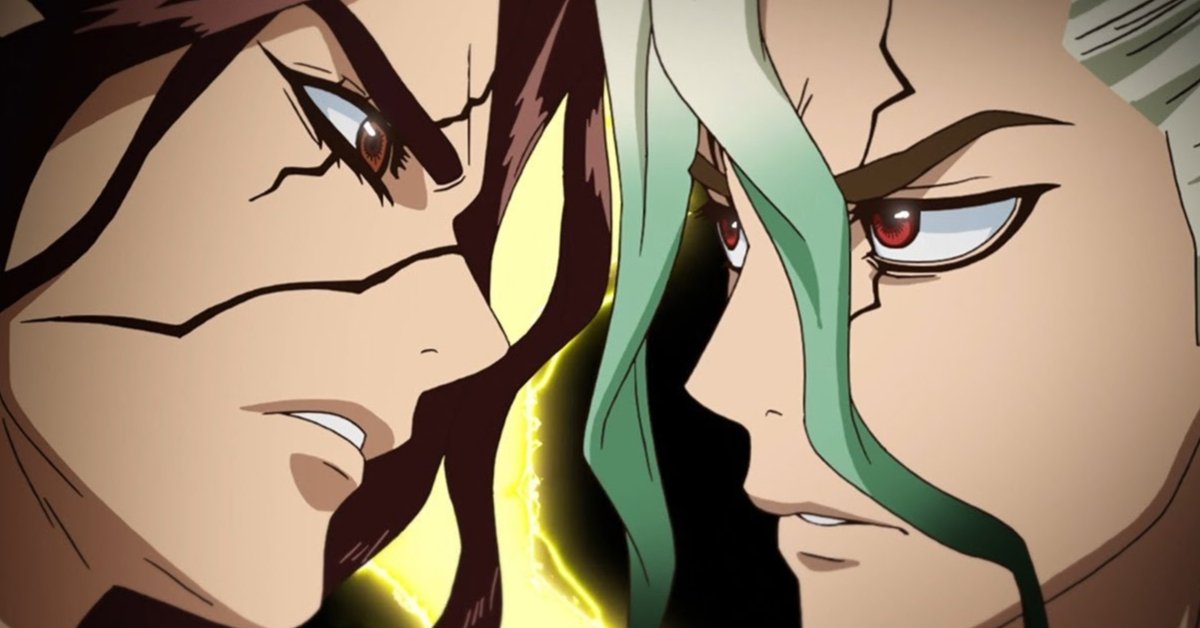
At first glance, it might seem like Dr. Stone totally shares Rand’s views about human exceptionalism and might eventually align with her other positions, depicting the rise of a highly individualist and capitalist post-apocalyptic society under either Senku or Tsukasa. However, the show’s viewpoint isn’t quite that simple. In the finer details of its presentation and worldbuilding, the story actually celebrates collectivism just as much as it glorifies its central characters’ talents, resulting in a complex and perhaps slightly confused philosophical message.
Rock Together
The first key to understanding Dr. Stone’s collectivism is how Senku and his allies think about his inventions. When Senku uses pottery to distill alcohol, he’s hardly boastful about his achievement, remarking: “People in the Mesopotamian Civilization were doing it in three thousand B.C. using clay pots.” When Senku creates a light bulb, Gen makes an even more specific credit, calling it an “Edison light bulb.” And when Senku is making powerful magnets to use in a hand-cranked electrical generator, he cites a real, still-living scientist, remarking:
“An old guy named Wasilewski at NASA has already succeeded in an experiment to make magnets using lightning.”
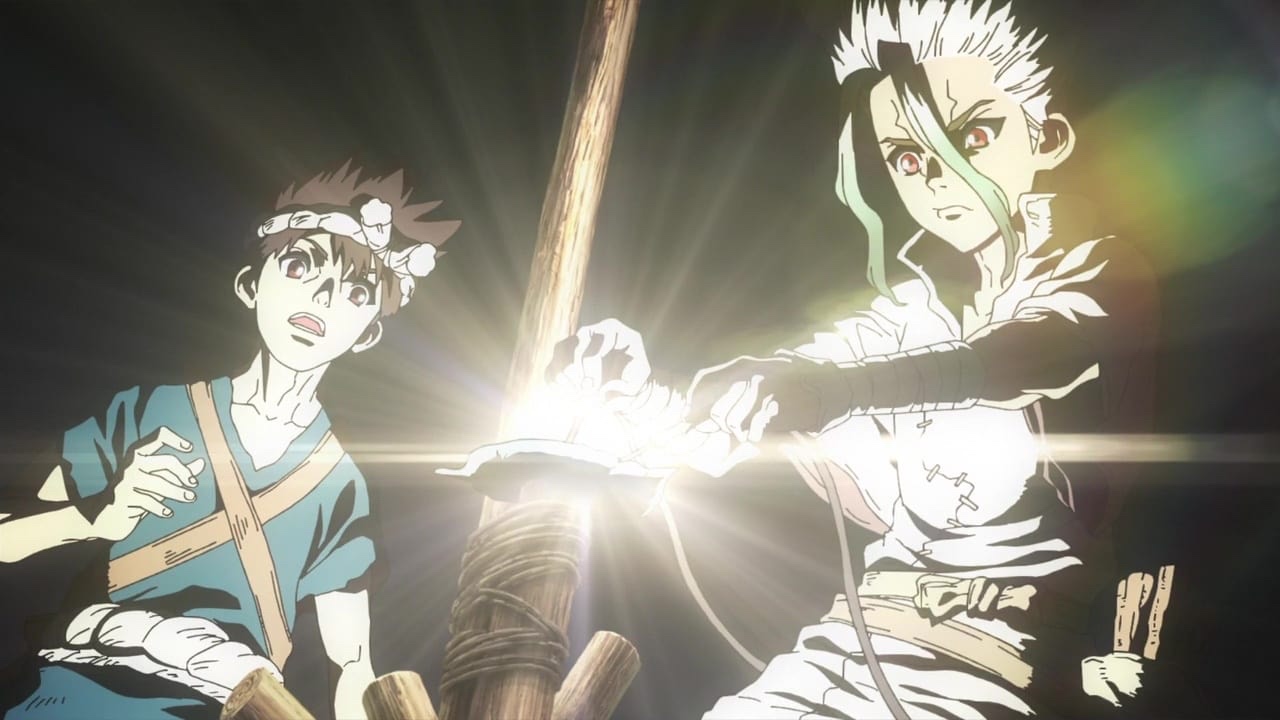
From ancient civilizations to world-famous inventors to modern scientists working toward incremental but amazing discoveries, Senku is constantly acknowledging his debt to the scientific knowledge that’s been accumulated by generations of people who came before him. Unlike in the case of Ayn Rand’s Howard Roark, Senku’s exceptional achievements aren’t entirely attributed to an inherent intellectual superiority or unique vision. Instead, Senku is only as exceptional as the collection of thinkers backing him up.
When Dr. Stone is viewed through this lens, the other exceptional characters’ presence also starts to make more sense. All of the bizarrely talented people in the series are also de-petrified survivors from the modern world. Gen the mentalist owes his manipulative wiles to the highly developed, twenty-first-century field of psychology. Homura, the scout, is so agile because of her mastery over the discipline of gymnastics, which took centuries to progress to where it is today.
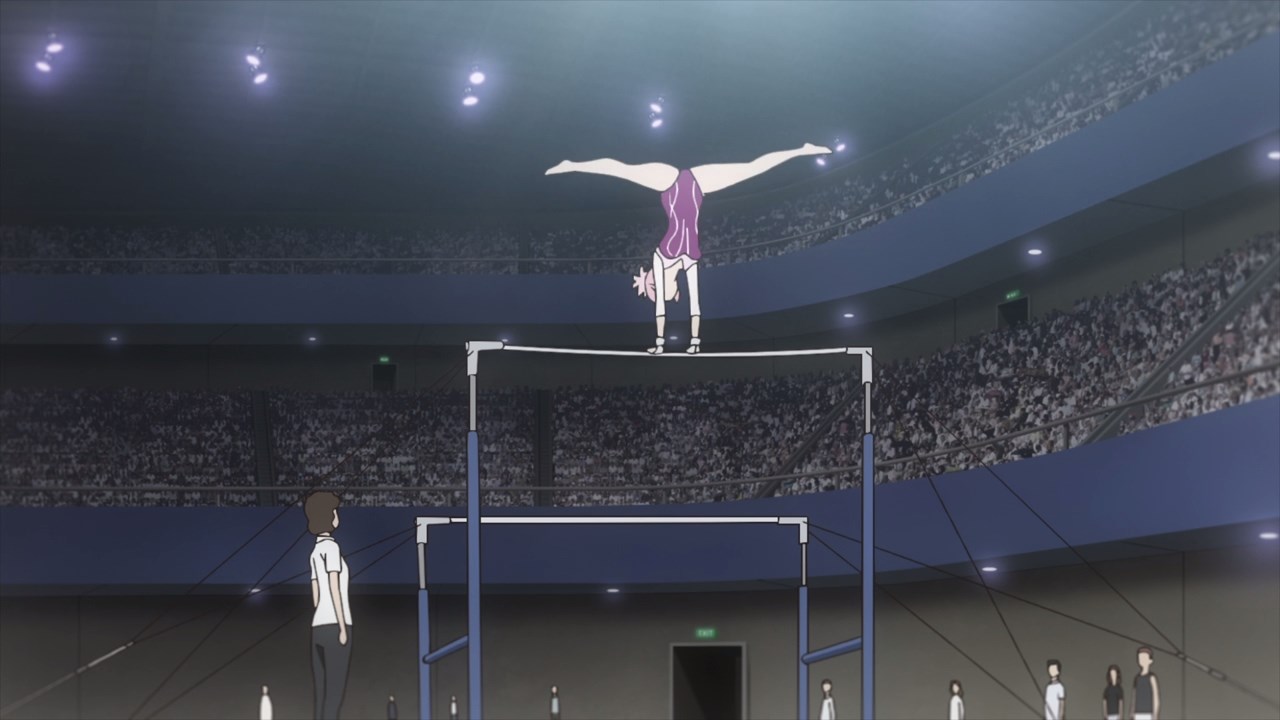
Further, Ukyo wouldn’t have his incredible hearing if he hadn’t been born into a world with sonar technology. Even Tsukasa, the physical embodiment of innate strength, trained as an MMA fighter and probably has modern exercise equipment and diets to thank for his incredible brawn. Collectivist themes are also reflected in Senku’s primitive society, known as the Kingdom of Science. Though Senku provides the knowledge needed to carry out his schemes, he’s physically weak and unskilled with his hands.
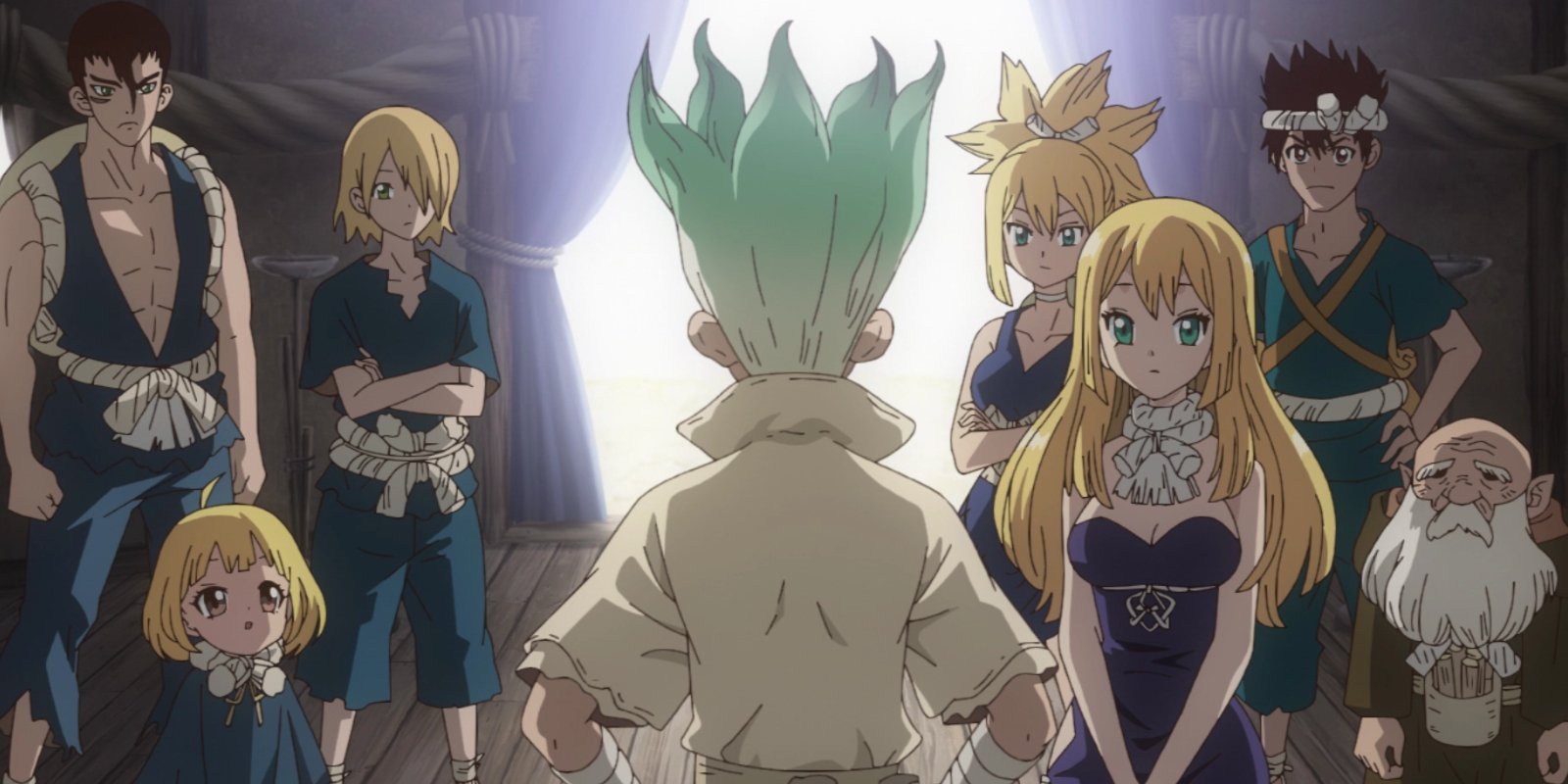
Luckily, he’s more than happy to rely on the skills of the people from the village he discovers. Without Kaseki, a wizened and experienced craftsperson, or Kinro and Ginro, brothers who have built strength and endurance over years of guarding the village, the vast majority of Senku’s scientific schemes would never get off the ground. Chrome, another villager, is a bit of a scientist himself and had been inadvertently discovering scientific phenomena and collecting useful minerals for years before Senku’s arrival.
He doesn’t have Senku’s scientific prowess because he doesn’t have access to the modern world’s scientific knowledge. Still, Senku is eager to change that, immediately deputizing Chrome and beginning to teach him the basics of science. Chrome demonstrates the series collectivist ethos more than any other character because he shows that Senku’s knowledge isn’t only borrowed from past thinkers but that it can be transferred further so that everyone can benefit.
Rocky Messaging
These collectivist undercurrents, however, don’t change the wildly exaggerated prowess that Senku and Tsukasa possess. Their absurd abilities still give out individualist signals, similar to how supernatural capabilities are used as metaphors for real-life exceptional qualities in The Incredibles.
In order to reconcile these mixed messages, it’s important to consider the genre to which Dr. Stone belongs. Because of the need to generate marketing appeal with their protagonists, just about all shonen manga are about exceptionally powerful or interesting people. A perfect example is Goku from Dragon Ball Z, who’s synonymous with both “shonen protagonist” and “exceptionally powerful.” So, as a shonen protagonist himself, Senku’s exceptionality is in keeping with the tropes of his genre. He even has the hair to match.
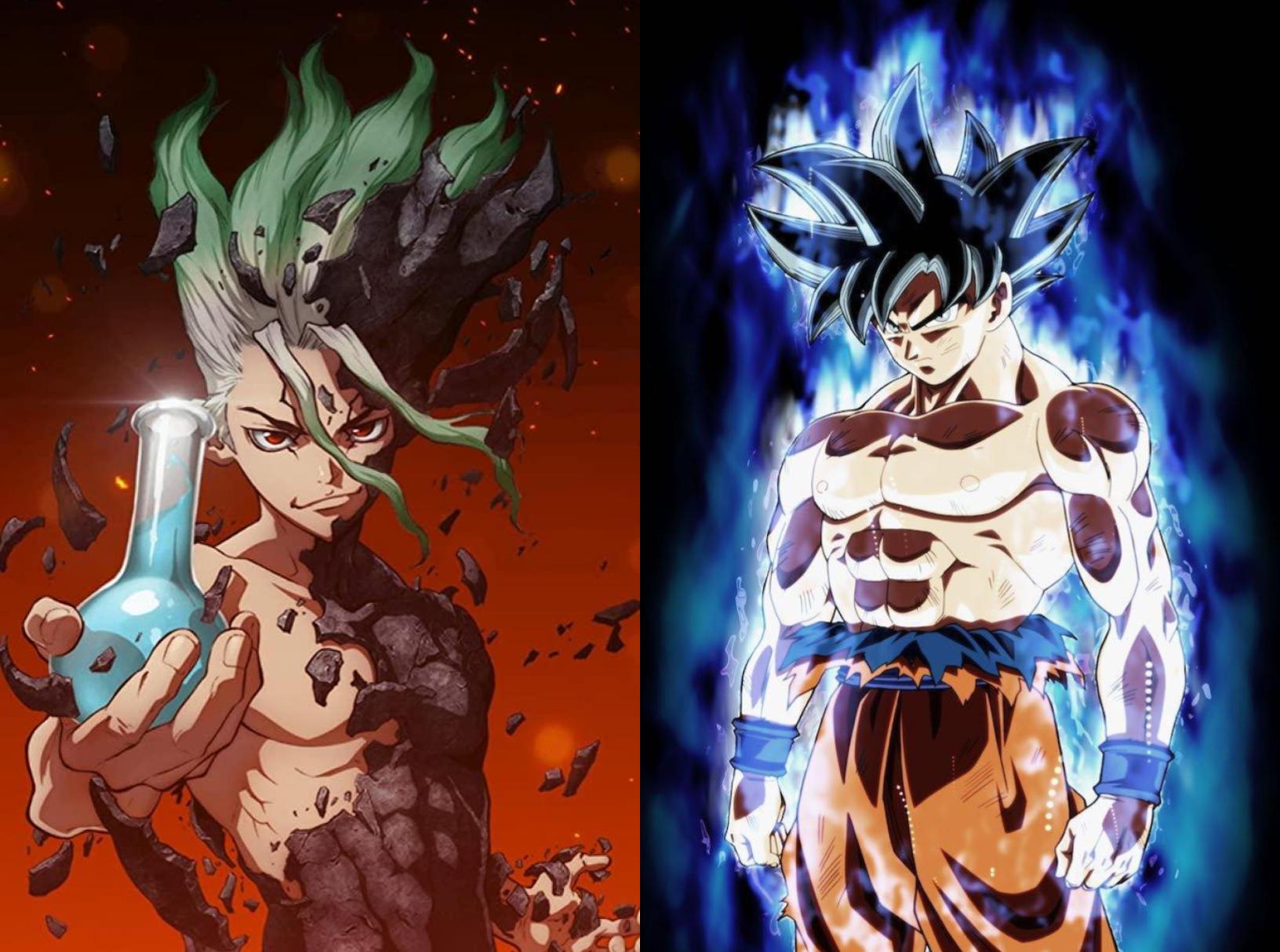
Dragon Ball Z. Akira Toriyama. 1989-1996.
It wouldn’t be totally absurd to read Goku as an Objectivist hero. Rand probably would have loved him. However, Dragon Ball Z is a martial arts action series, so politics just doesn’t factor into the story that much. In contrast, Dr. Stone is about the future of humanity after a cataclysmic apocalypse. In that context, questions about the inner workings of budding societies and the political ideologies that motivate them are extremely relevant. But in the show itself, those down-to-earth concerns often clash with Senku’s cackling displays of absurd scientific recall or Tsukasa’s wildly unrealistic feats of strength.
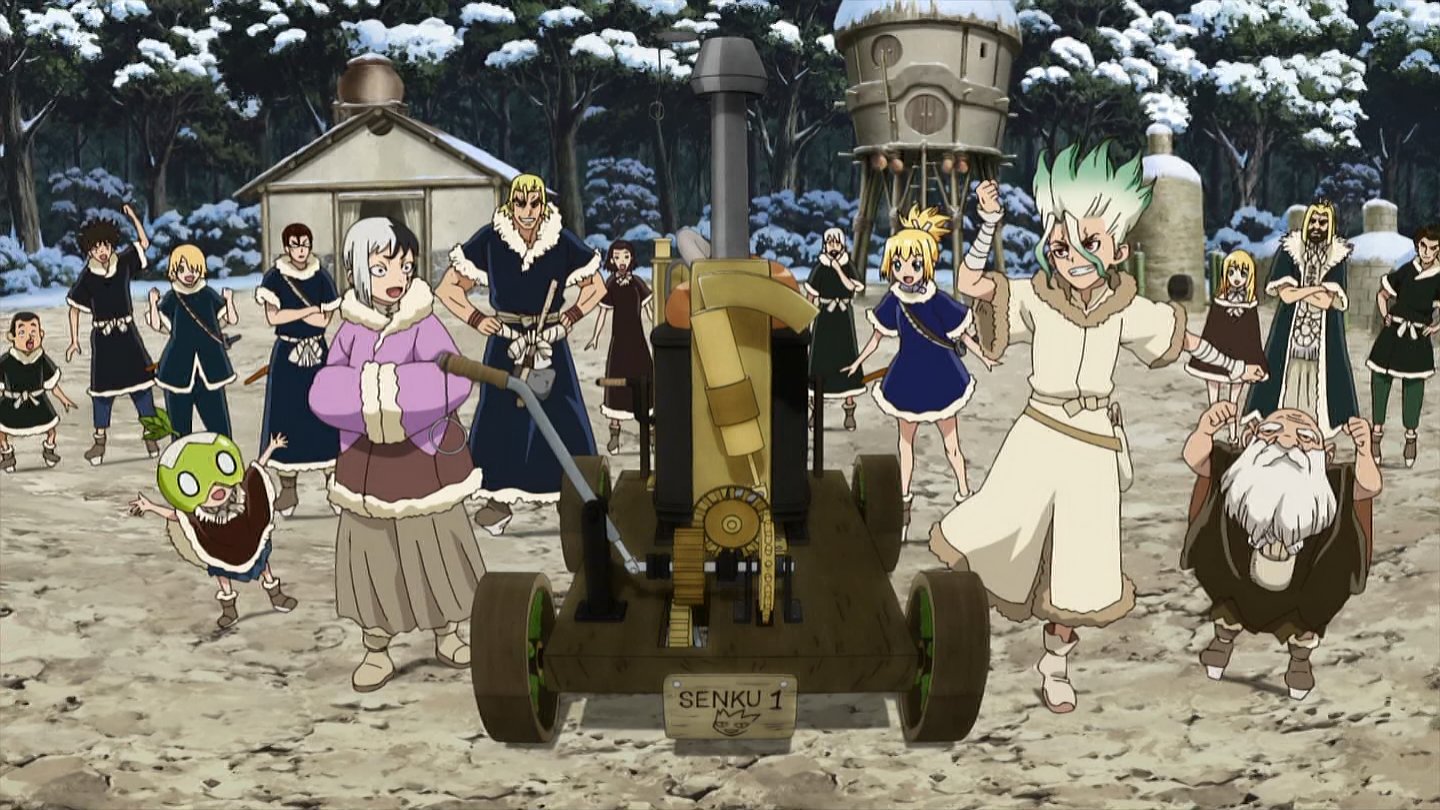
Dr. Stone is a series that celebrates the collective advancements of the modern world by placing the beneficiaries of those advancements on primitive earth and watching them achieve great things, with centuries of knowledge and diverse allies backing them up. That message is somewhat muddled by the series’ adherence to shonen tropes involving powerful and charismatic heroes and villains. But when these surface-level tropes are stripped away, the core theme of Dr. Stone is undoubtedly the power of the collective spirit.
